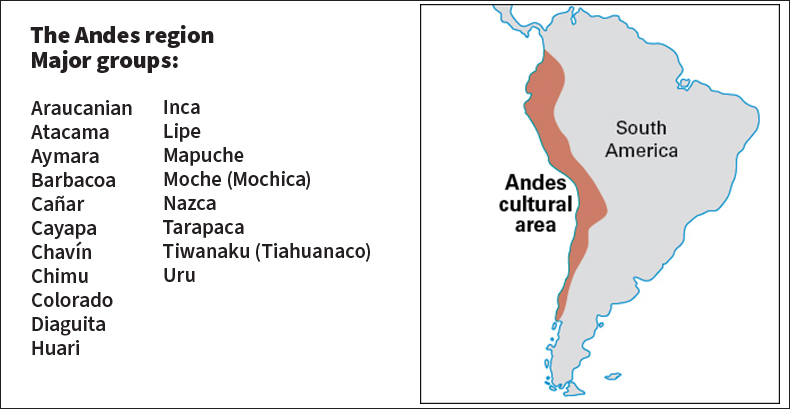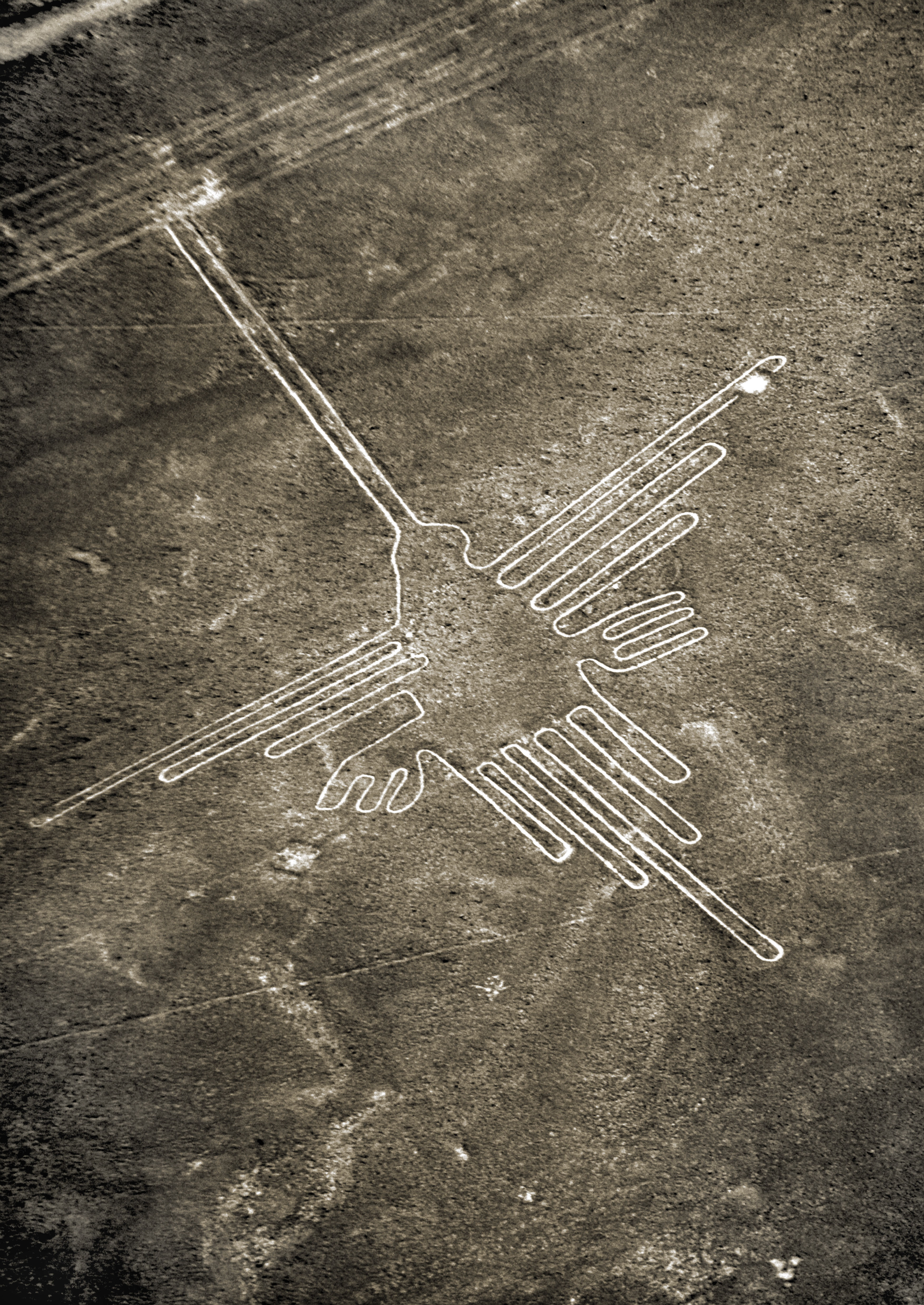Nazca << NAHS kuh >> was a Native American culture that thrived in the coastal desert of what is now southern Peru from as early as 100 B.C. to A.D. 800. The Nazca people are known for the huge etchings they made in the surface of the desert and for their colorful pottery. The name of the culture is also spelled Nasca.

The desert etchings, called the Nazca lines, include sets of parallel lines, and the outlines of animals and geometric shapes. Some of the lines are several miles long, and some of the animal figures measure more than 400 feet (120 meters) in length. The Nazca made the markings by removing dark surface rocks to expose light-colored sand underneath. The Nazca may have used the markings to follow the positions of stars in the night sky and thus to keep track of the seasons.

Nazca pottery includes bowls and other vessels and such musical instruments as pipes, drums, and rattles. The Nazca decorated much of the pottery with plant and animal designs. Some vessels are shaped like animals or people. The Nazca also wove cotton and wool textiles.
The Nazca lived in villages. They built their homes of canes tied together and covered with mud. Larger structures were made of adobe. The Nazca used irrigation to grow corn and other crops. About A.D. 800, the Nazca culture became mixed with the Huari Indian culture, possibly after an invasion of the Nazca region.
See also Nazca lines .
